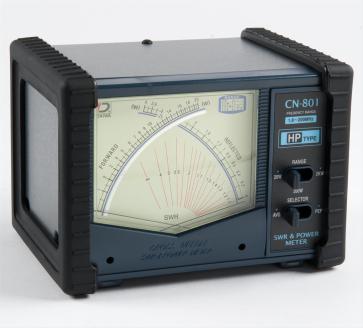Your SWR (standing wave ratio) meter looks at forward (used) power and reflected (wasted) power as a measure of antenna system efficiency. This basic measurement has been used for decades to indicate “good” versus “bad” antenna operation, but it is actually an indication of the match between the radio and the feedline at a given frequency. The SWR match changes with frequency.
In order to use your SWR meter correctly, you must use a continuous (unchanging) signal. That’s the reason you cannot measure SWR with your transmitter in the SSB (single sideband) mode. SSB power only exists with modulation present and varies in response to the applied audio amplitude. To perform SWR measurements, it is necessary to use a mode that has a constant carrier, such as AM, FM or CW. Each of those modes provides a continuous, steady output that allows SWR measurement.
Set your meter to the appropriate power setting for your transmitter. Then set your meter to the “Forward Power” setting. Adjust the meter sensitivity control to the maximum value on the forward scale. After adjustment, switch the meter to “Reflected Power.” You may now read your SWR on the reflected power scale. NOTE: A “cross needle” type meter reads SWR and forward and reflected power simultaneously.
An SWR of 2:1 is actually acceptable. This represents that about 89 percent of your power is being accepted by the antenna system. A very good 1.5:1 SWR means that about 96 percent of your signal is being accepted by the antenna system. Anything below 1.5:1 is an excellent SWR value. Most modern transceivers start to “roll back” their output power automatically with SWR values just below 2:1. This is done to protect their RF output stage from damage. This means that your 100 watt output transmitter may only allow 30 watts maximum output (or less!) on an antenna system with a 2.5:1 SWR.



Pingback: nanoVNAは電波法違反なのか?について考える ~ IARUがスペクトラム汚染を除去宣言に呼応して ~ アマチュア無線局にはSWRメーターが必須です!! | JF2IWL